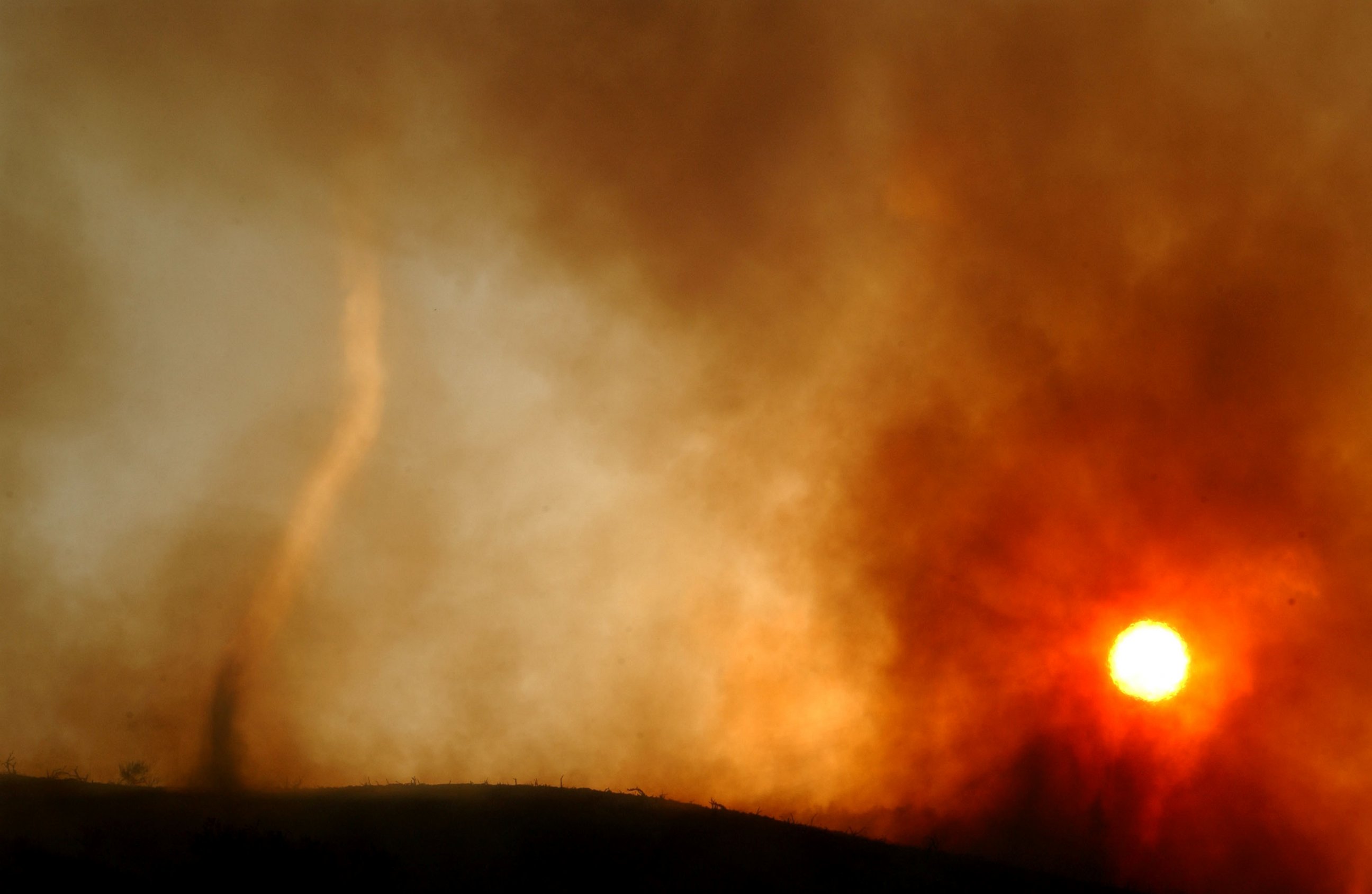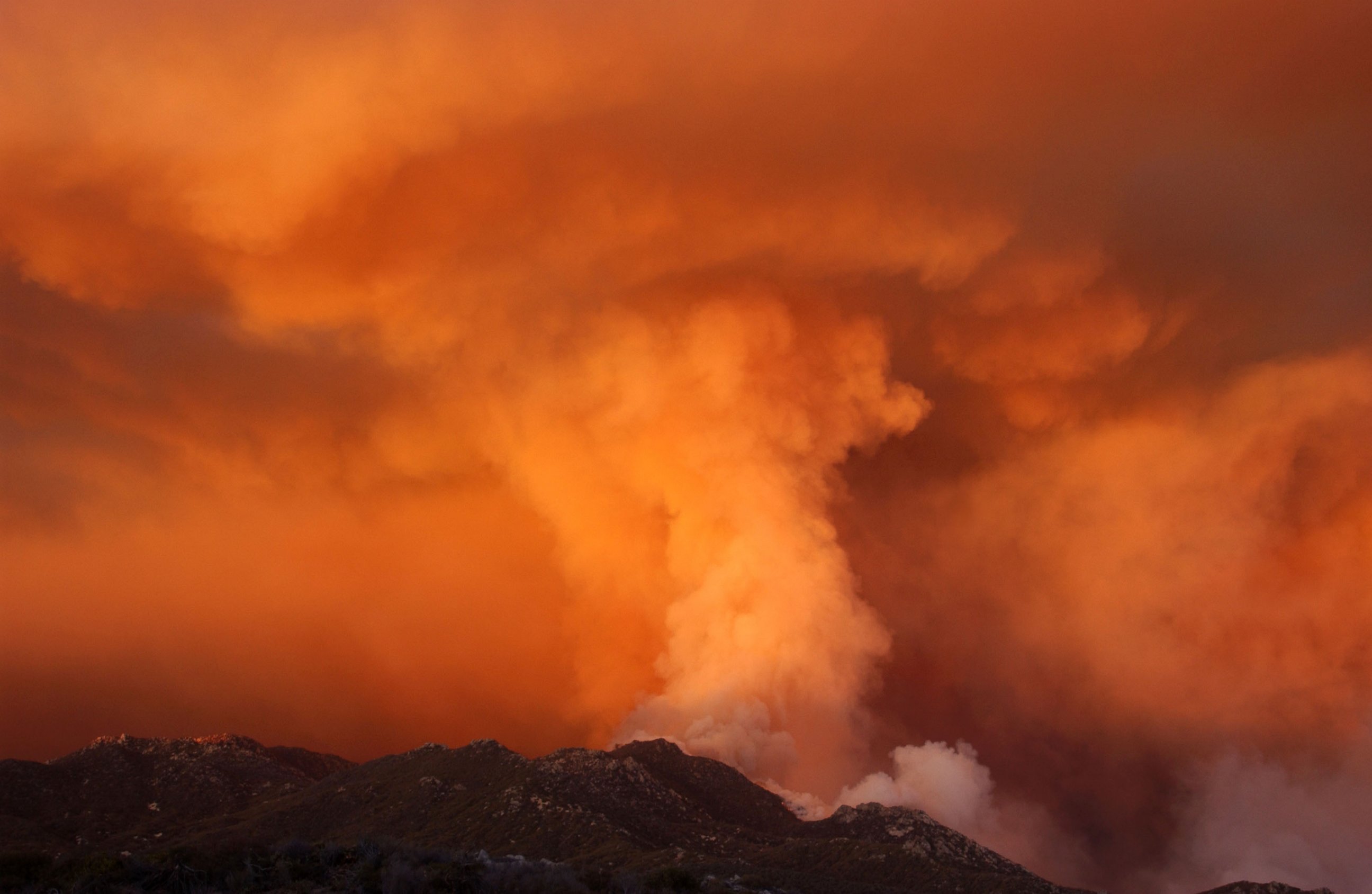What a Firenado Is and How It Happens
Striking phenomenon can happen during wildfires like in California.
May 15, 2014— -- Wildfires ravaging the West Coast have created the scary phenomenon of firenadoes — dangerous columns of flame that suck in debris and spew hot embers for miles around.
Firenadoes happen when ground-level winds come in contact with fire and whip it into the air, creating a shocking spiral of bright red and orange.
Wildfires Still Burning Across California
Photos: Fires Sear Through Southern California Towns

They’re an amazing sight but dangerous for firefighters, as the tunnels suck in burning debris and can spit embers miles away, enlarging a wildfire’s path of destruction.
Most firenadoes usually last only a couple minutes.
The phenomenon can happen with smoke, too, when spiraling wind creates a smokenado.





